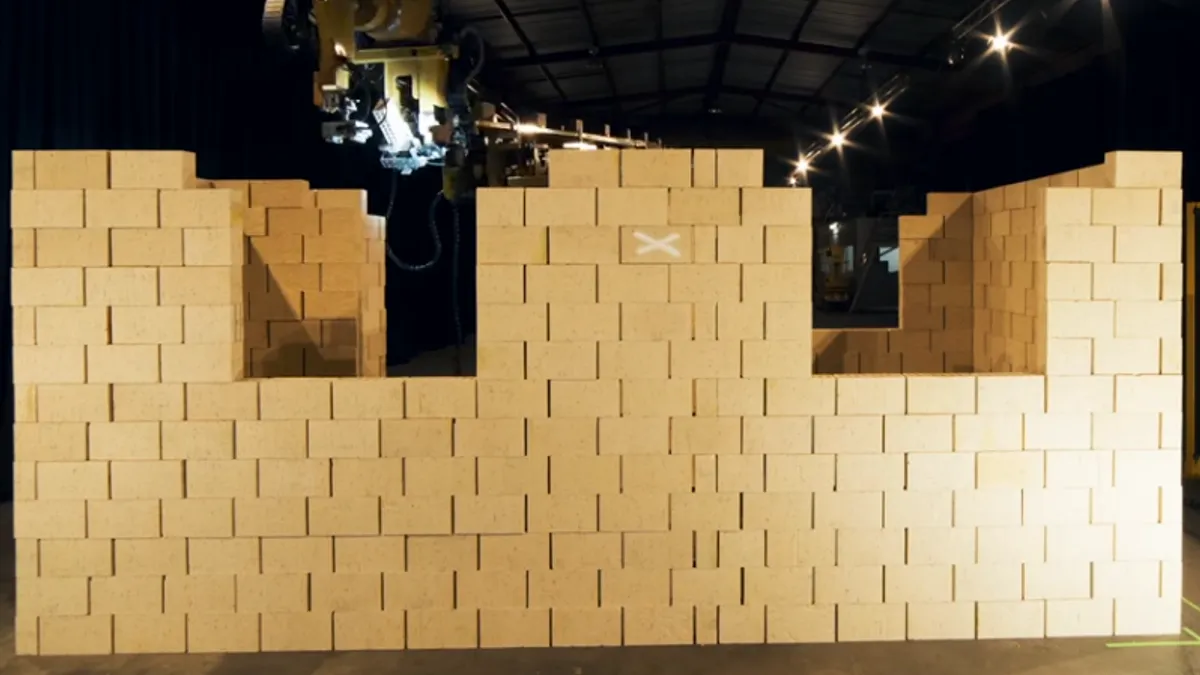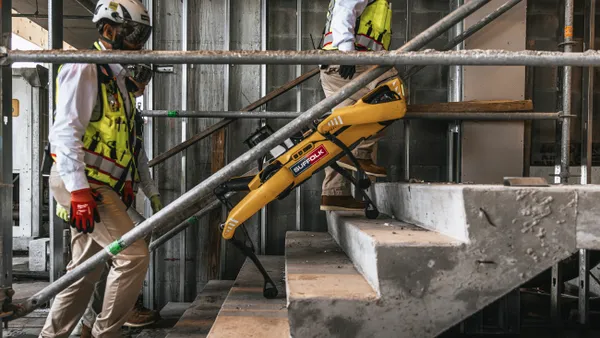Dive Brief:
-
The Dubai Electricity and Water Authority has contracted Convrgnt Value Engineering, in the United Arab Emirates, to build the world’s first 3-D printed laboratory.
-
Dubai has laid claim to the first 3-D printed office building and pledged that a quarter of the city’s buildings will be made using the technology by 2030.
-
The 3-D printed laboratory boasts an electronics, mechanical, software and prototype lab. It will be the first of its kind to be printed and assembled onsite.
Dive Insight:
The printer that created the world's first 3-D printed office building, in Dubai, was two stories tall, 40 feet wide and 120 feet long — and offsite to boot. That job nevertheless took just over two weeks to complete and toppped out for roughly $140,000, which is half the cost of a traditional build-out. The DEWA Lab will be one of Dubai’s first major 3-D print builds to bring the printers onsite, drastically reducing the time required to transport and assemble building components into a finished structure.
Whether or not 3-D printing is scalable among construction projects worldwide remains to be seen, but the technology is threatening disruption to large classes of construction workers in much the same way Uber displaced the taxi and livery industry. Of course, the recession drastically thinned construction labor ranks to begin with. The Associated General Contractors of America reported that year-over-year construction employment grew by 61% in 358 U.S. metros in August 2016 — the smallest gain in three years. As a result, the industry is pushing for more career and technical education programs in high schools and colleges focused on the skilled trades to grow labor pools.
Meanwhile, however, technologies like 3-D printing and construction methods including offsite fabrication are getting more attention. On Oct. 5, AEC software developer Autodesk opened its BUILD workshop in Boston, which is fitted with 3-D printers, CNC routers, robotic arms and other tools to help companies and researchers explore high-tech fabrication methods. It is just the latest manifestation of the trend toward novel manufacturing processes that bring the construction site into the lab, and vice-versa. That's positioning 3-D printing for continued growth should the industry remain bereft of the manpower to supply, transport and assemble materials into finished buildings.














